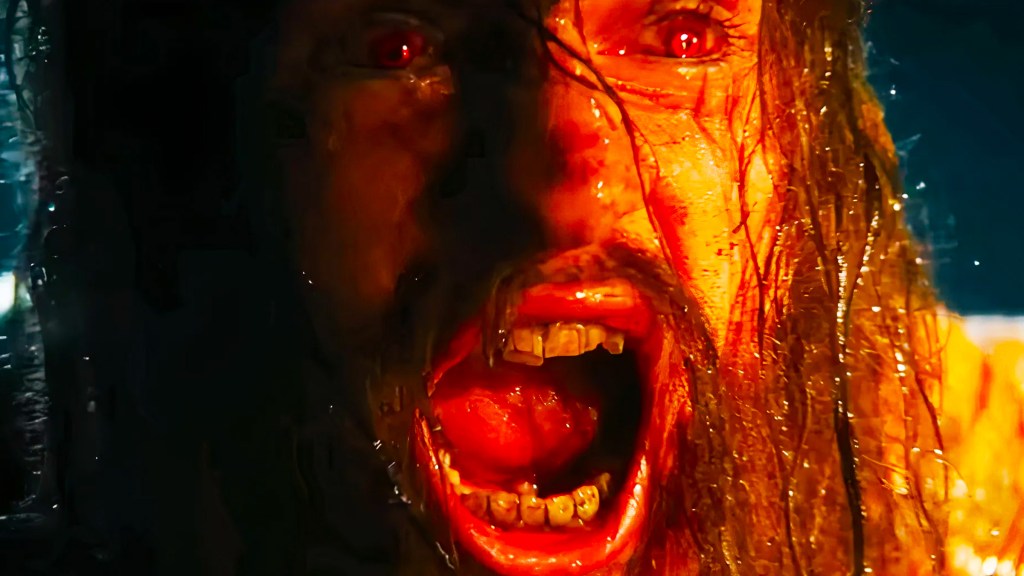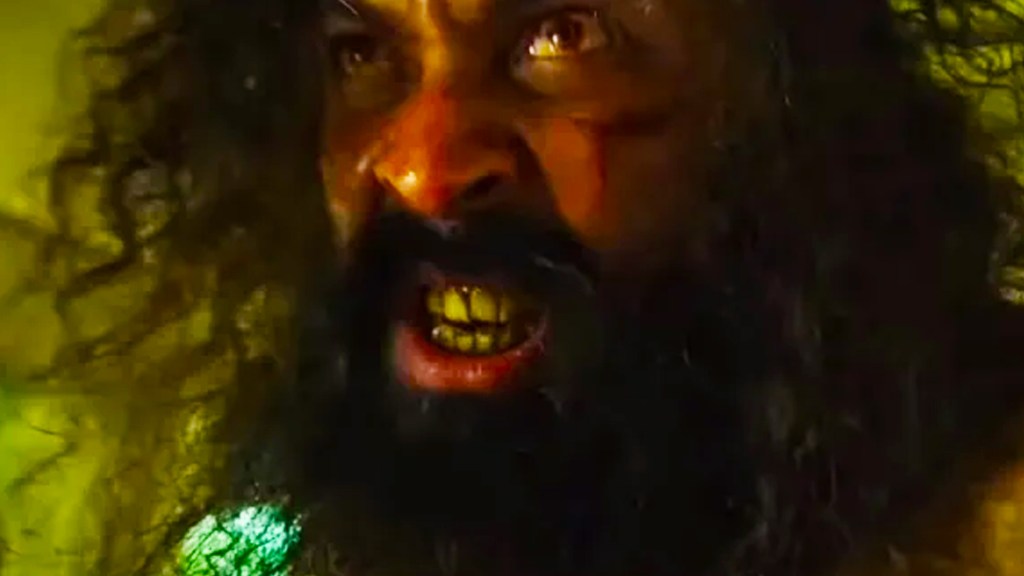The lore of the Rage Virus evolved in 28 Years Later, and director Danny Boyle and writer Alex Garland introduced new versions of the infected, including Alphas. While 28 Days Later and 28 Weeks Later featured the Rage Virus-infected people acting much more like the stereotypical zombie, 28 Years Later made them more human, animalistic, and understandable. The Rage Virus doesn’t kill the infected – they’re just sick people – which means the adjustments Boyle and Garland have made to the virus 28 years after the initial outbreak make a lot of sense.
Videos by ComicBook.com
28 Years Later confirmed that the infected still eat, therefore retconning the idea of starving them out from 28 Weeks Later. Some became bottom-feeders, gaining a huge amount of weight by scavenging on the ground and crawling around, while some remained alone, such as the thin infected in the field that surprises Spike (Alfie Williams) and his mother, Isla (Jodie Comer). Others, however, formed packs like wild animals, and fell under the leadership of infected humans in which the Rage Virus has acted like a steroid, increasing their strength, speed, and stamina, transforming them into Alphas.
28 Years Later Introduces Two Terrifying Alphas

Two such Alphas are introduced in 28 Years Later, though it’s suspected there are many more, each leading their own pack of infected and acting as the central male in these packs. The Alpha that Spike and Jamie (Aaron Taylor-Johnson) first face is found when journeying onto mainland Britain from their home on the island of Lindisfarne, aka Holy Island, which is separated from the mainland by a tidal causeway. This Alpha is known as “Berserker” and played by Chris Gregory. He leads the chase for Spike and Jamie that ends at an abandoned cottage, and eventually, Berserker follows Spike and Jamie back home to Lindisfarne.
Berserker chases Spike and Jamie down the causeway as the tides are coming in, and very nearly kills them until he is taken down by some heavy artillery at Lindisfarne’s gates. The Alphas can withstand a huge amount of fire, which makes typical bows and arrows all but useless against them. However, 28 Years Later also confirms that the Rage Virus can be quelled by morphine, which Dr. Kelson (Ralph Fiennes) uses to subdue the Alpha he names “Samson,” before it can attack Spike and Isla. Kelson has formed an affinity for Samson (Chi Lewis-Parry), whom he notes has lived in the area for three years.
The Alphas are the perfect example of how the Rage Virus affects people differently. It makes sense that a virus that increases rage, aggression, and adrenaline could act as a steroid in some humans, making them stronger, larger, and more violent – perfect leaders for a pack of infected. Berserker and Samson are surely just two of a much larger community, so 28 Years Later: The Bone Temple could explore the stories of more Alphas, as Spike is still on the mainland. This could continue to change what we know about the Rage Virus and its history.
How Alphas Change What We Know About the Rage Virus

Back in 2002 and 2007, the Rage Virus-infected people were practically zombies, running around attempting to infect anyone they could get their hands on, which may have confused some viewers. The infected are not in fact dead, they’re just insanely aggressive and run entirely on adrenaline, reverting to animals rather than humans with a sustained sanity. Now, some of them live in packs, bathing in rivers, and are even getting pregnant now (as seen in the film), but these packs are led by an Alpha – the biggest, strongest, and scariest among them.
The origins and mechanics of the Rage Virus have been a point of discussion since 2002’s 28 Days Later suggested it was born in chimpanzees who had been exposed to violent material as a means of creating a “cure” for anger. While these roots don’t entirely make sense – Alex Garland has suggested he came up with them to explain the virus as something not supernatural, meaning that 28 Years Later could lean heavier into how the virus actually works, scientifically speaking. This is more relevant in the wake of the COVID-19 pandemic, as we’re all now acutely aware of how viruses operate and what mass infection looks like.
28 Years Later set up some huge new lore and plot threads that can be examined more closely in future sequels. 28 Years Later: The Bone Temple was filmed back-to-back with its predecessor and is expected to be released in January of 2026. Danny Boyle and Alex Garland are also hoping this will lead to the development of a third movie, rounding off this new trilogy. Academy Award-winner Cillian Murphy will be reprising his original role as Jim from 28 Days Later in a future sequel, so it will be great to see him return alongside all this new mythology.
What did you make of the Alphas in 28 Years Later? Let us know in the comments!









